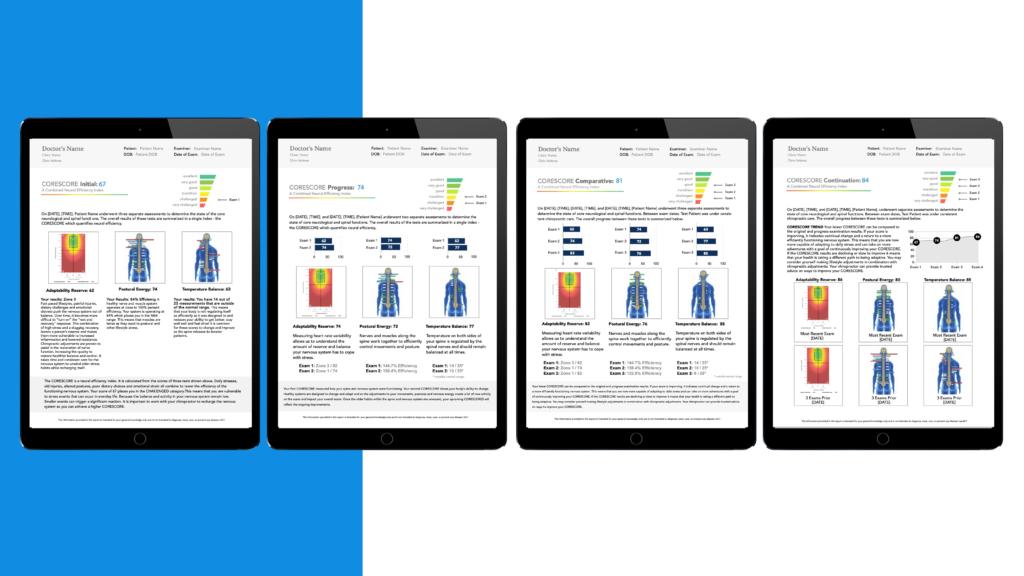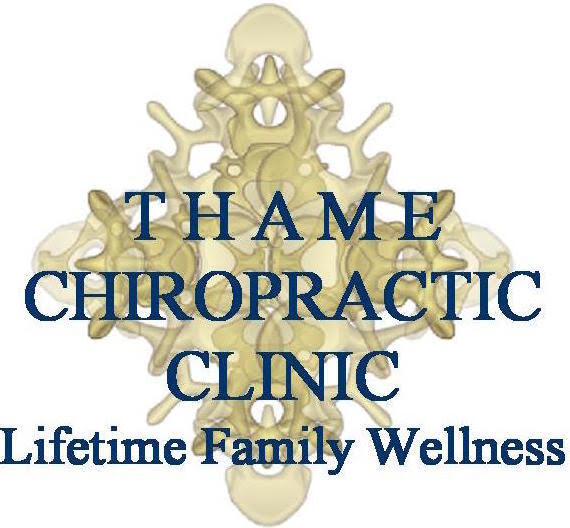neuroTECH
What is a neuroTECH Scan?
The neuroTECH Suite consists of 3 INSiGHT scanning instruments: The neuroPULSE HRV, The neuroCORE EMG and the neuroTHERMAL.
The neuroPULSE measures the pulse waves of a beating heart and calculates heart rate variability (HRV). It examines the impact of lifestyle stress while measuring adaptability. It plots the balance and overall activity of the autonomic nervous system which regulates not only the heart’s rate and rhythms but all bodily functions. The neuroPULSE is a specialized HRV system which simultaneously streams Galvanic Skin response GSR for anxiety testing along with finger temperature while analyzing heart rates. The combination of these three metrics ensures that the HRV testing is done in the normal resting state which ensures accurate and reproducible results on each exam. The results are plotted so that they can be compared to a chiropractic patient database. This is important as it allows the clinician to show the patient their results in comparison to others and develop care plans accordingly.
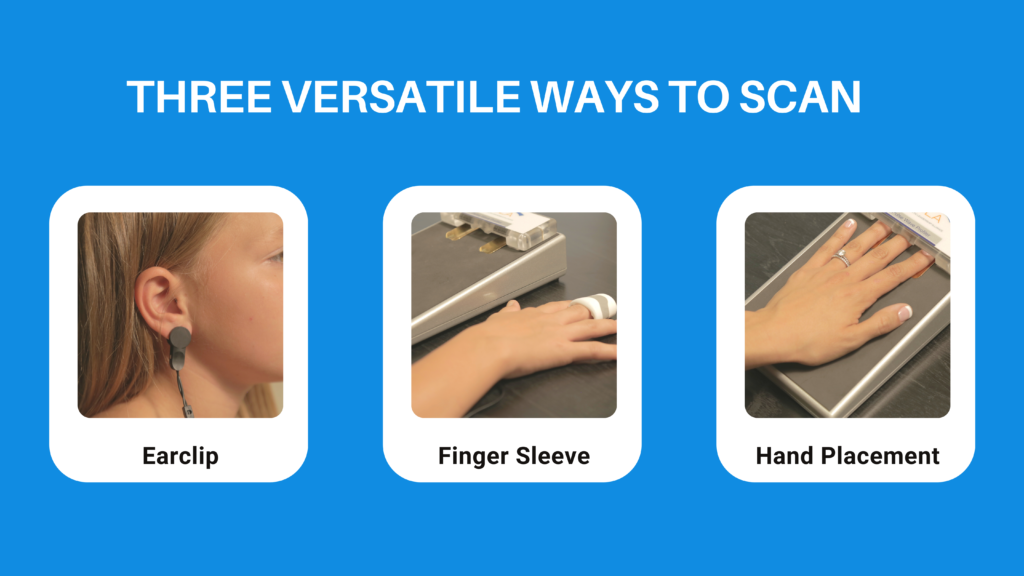
The neuroPULSE can be used with patients of all ages to track their adaptive reserve. A specialized ear clip and finger sleeve sensor are included and are designed to be used with paediatric patients.
A three minute collection is generally recommended to assure that enough pulse wave data is collected during the examination. The examiner has the ability to increase or decrease the collection time depending on the patient and the situation.
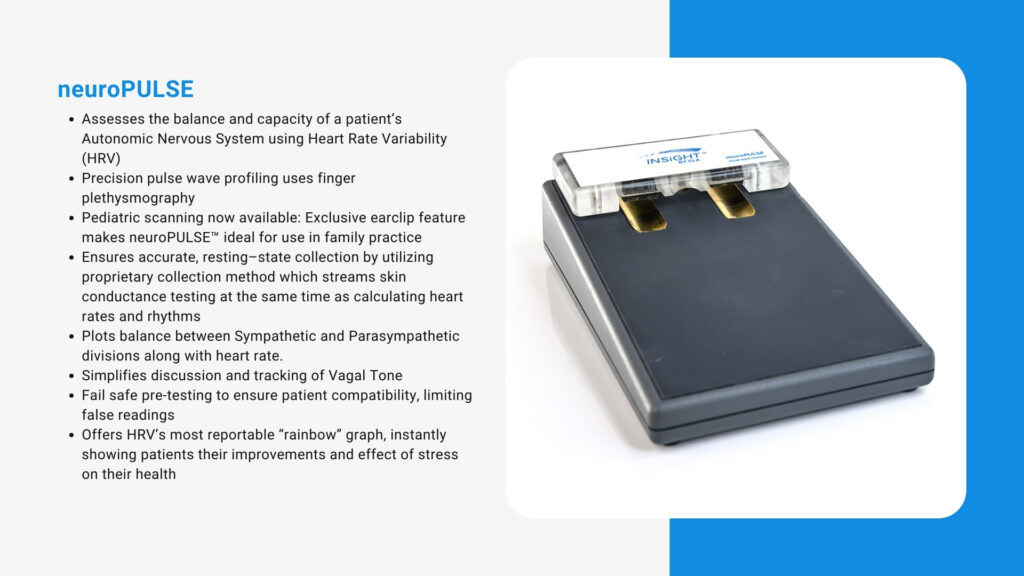
The neuroCORE is a next level evolution of the original wired sEMG console which only allowed examinations to be performed in the exam room. It can be used confidently in adults and in children over the age of five.The wireless version onboa has an onboard touch screen and ergonomic design allowing for a simplified scanning experience.
EMG or Electromyography has been a mainstay for measuring the brain to body neural connections which maintain posture and allow muscles and joints to move freely. An sEMG scan (s stands for surface as compared to medical EMG which uses needle electrodes!) shows where neuromuscular tension is associated with faulty postures,
wasted muscle and nerve energy, and subluxation patterns. It is used to measure overall fatigue and exhaustion.
The instrument tests the right and left spinal neuromuscular signals at any level of the spine. A typical full spine examination with the EMG takes less than 2 minutes to complete.
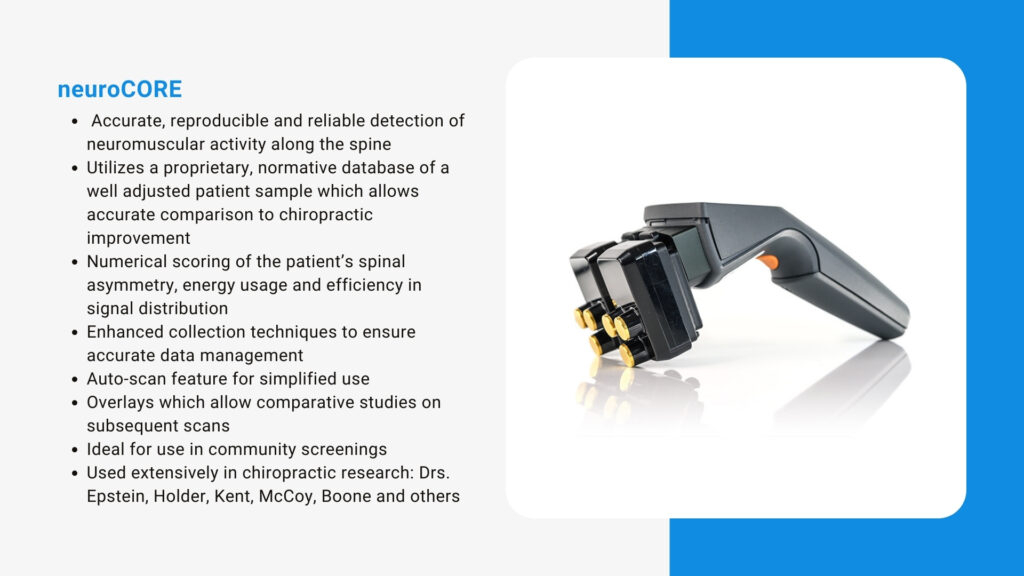
The neuroTHERMAL scans for temperature differentials along the entire spine and in specific areas like the Upper Cervical region..It rolls up the spine detecting areas where the nervous system is aggravated or obstructed. By comparing the patient’s results to normal data, the examiner can instantly identify regions that are subluxated and as a result, determine if nerve tension is affecting the regulation of the organ and glands.
As the neuroTHERMAL rolls up the spine, it uses infrared scanning technology to capture thousands of temperature readings at every level of the spine. If nerve interference is occurring, the temperature cannot be maintained in that range. Heating and cooling trends are then mapped, giving the clinician important and accurate data on how spinal nerve interference is affecting the control of organs and glands and of course, skin temperature. If a vertebral subluxation is persistent it will affect the body’s ability to regulate skin temperature.
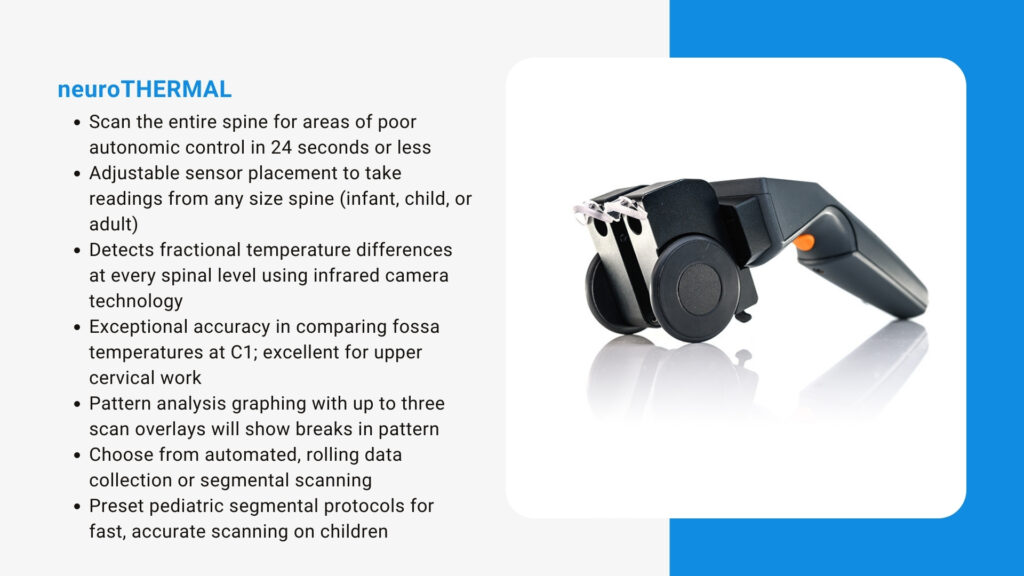
The same nerves that manage the skin temperature control the organs and glands. Nerves from several spinal segments send these signals to a relay centers known as ganglia which then direct the messages to the end organs. It’s from this information that an entire library known as, neuroLINK, built into the INSiGHT software provides patient education on the importance of chiropractic in helping to manage organ-specific conditions.
The neuroTHERMAL sensors can be used on all ages by simply positioning the two sensor blocks to the size of the patient’s spine; they are used in pediatric practices to scan newborns and children in well-child check ups or when needed as part of a management program. A typical full spine rolling thermal exam takes just 25-30 seconds to complete. Customized protocols can be easily created and saved to allow examiners a wide variety of choices when using the neuroTHERMAL.
When all three instruments are combined in an examination within a prescribed time frame, the neuroTECH will produce a CORESCORE report.
